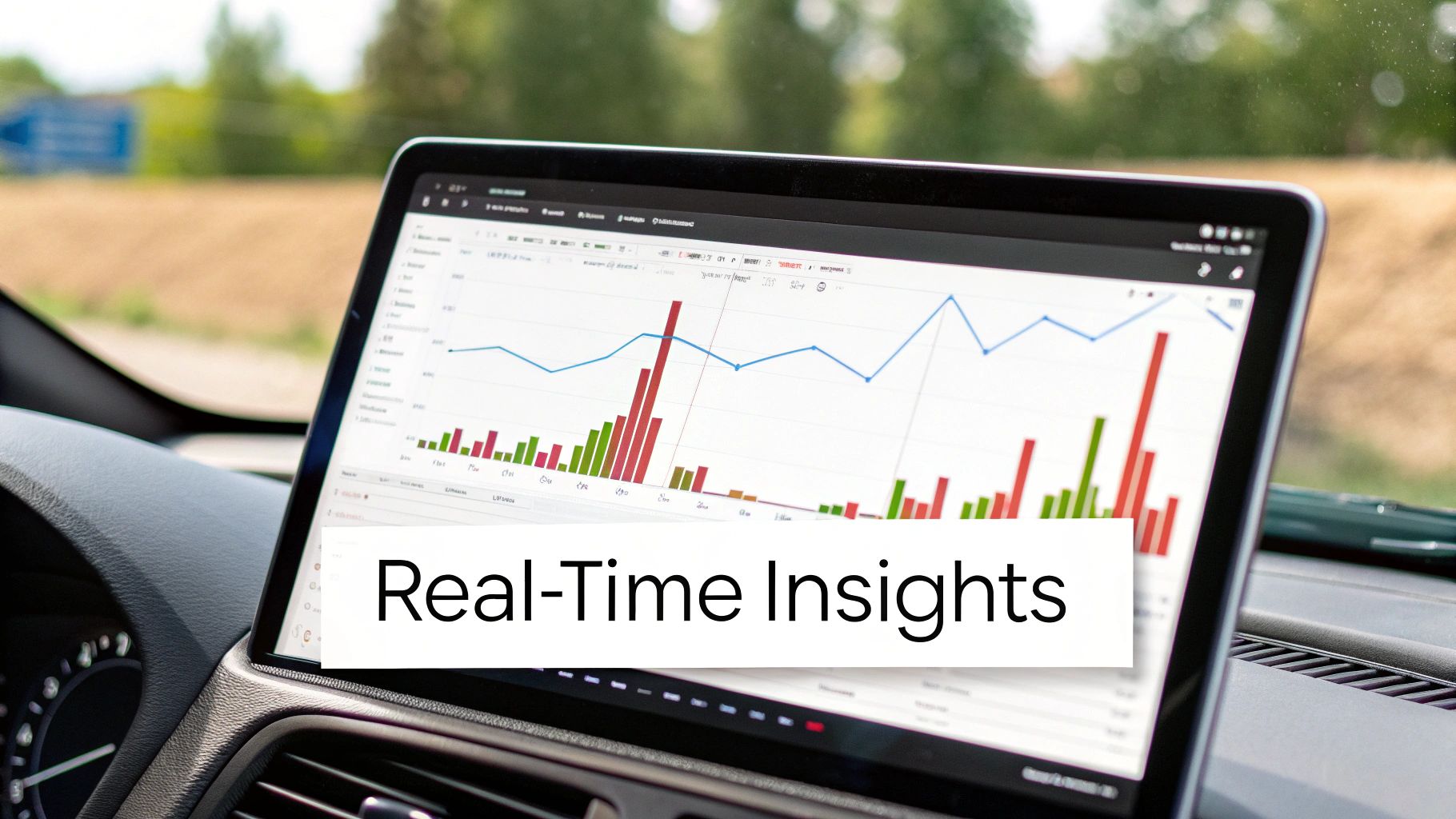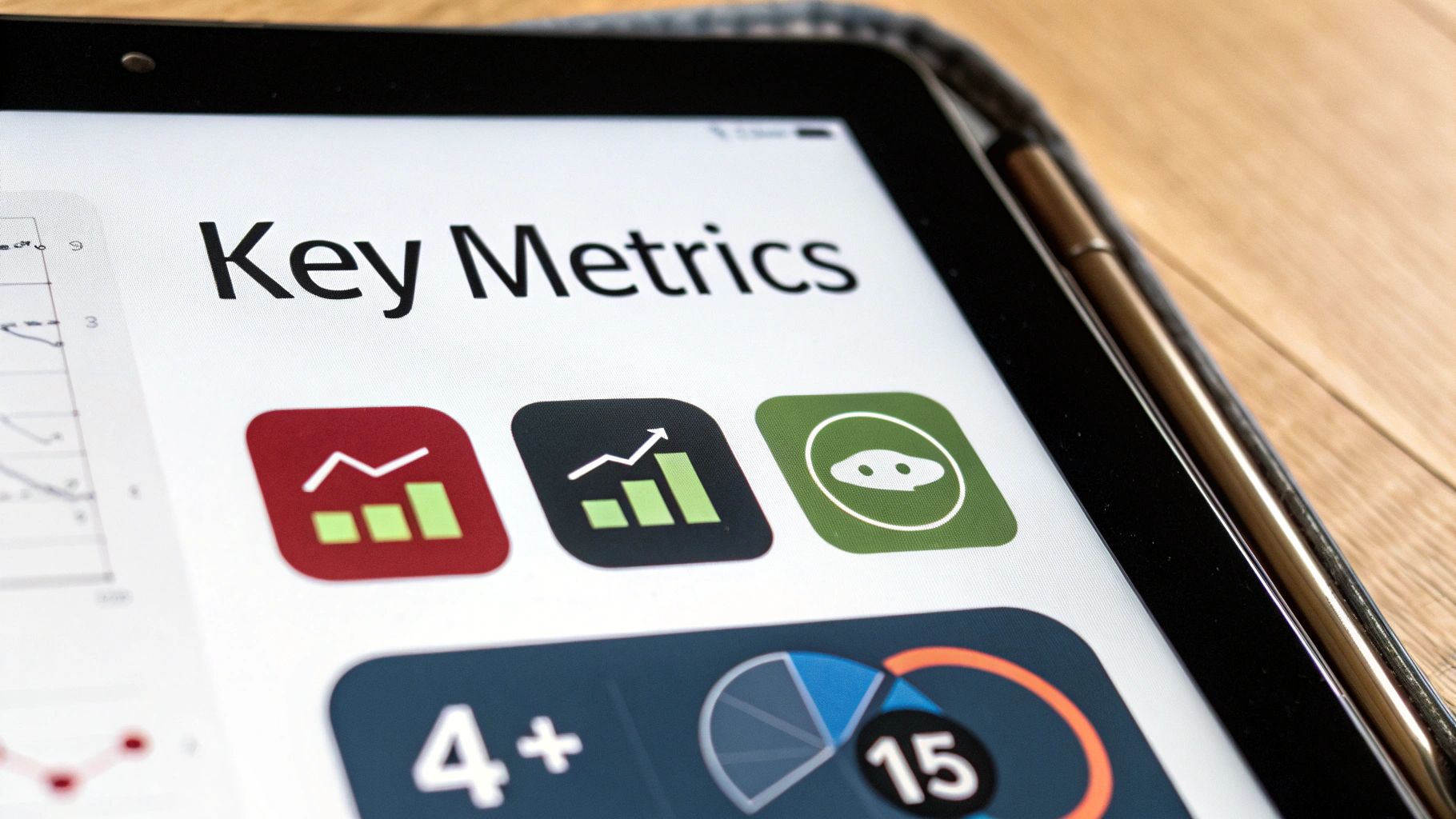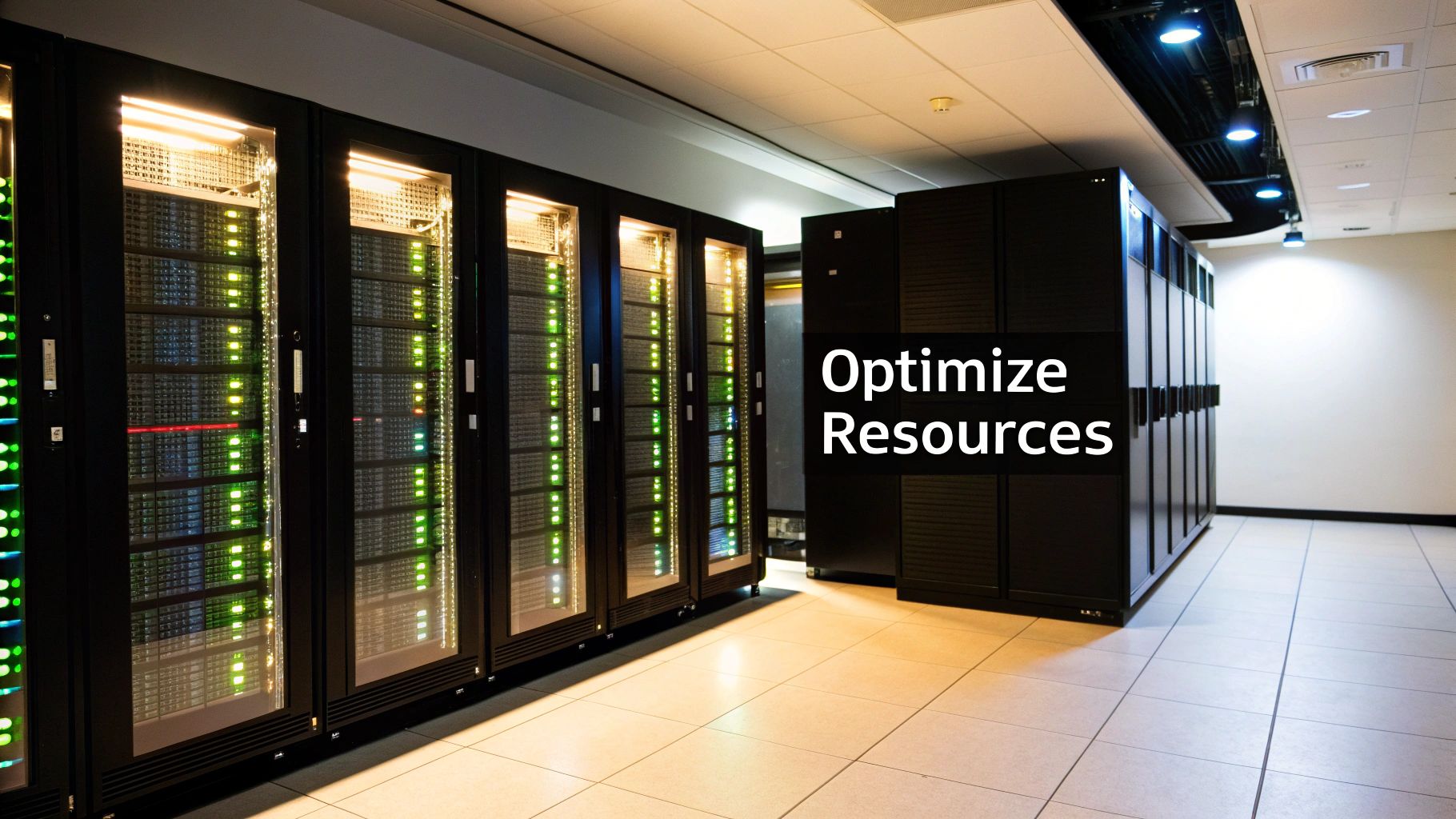Application performance metrics: Boost Your System
Decoding Application Performance Metrics That Actually Matter

In software development, where user experience determines success or failure, application performance metrics serve as the compass for optimization efforts. These measurements provide clear insights into how well your application performs, helping developers spot issues and enhance user satisfaction. Selecting the right metrics to monitor isn't just helpful—it's essential for meaningful improvement. Let's explore the performance metrics that genuinely impact your application's success, cutting through less valuable data points.
Identifying the Most Critical Application Performance Metrics
Good performance monitoring requires more than collecting numbers—it demands focusing on metrics that directly affect user happiness and business results. Average response time stands as a fundamental metric that shows how quickly your application handles user requests. Similarly, error rates reveal how often users encounter problems, helping teams identify trouble spots and set development priorities.
User satisfaction (Apdex scores) represents another vital metric that quantifies how happy users are with your application's performance. This score groups user experiences into satisfied, tolerating, and frustrated categories, giving you nuanced insight into user sentiment. Tracking the count of application instances helps manage resources efficiently, especially if you're using cloud services. When monitored consistently, these metrics ensure your application meets user expectations. The Apdex score specifically measures satisfaction by categorizing transactions as satisfied, tolerating, too slow, or failed. Learn more about application performance metrics at Stackify's performance metrics guide.
Balancing Technical and Business Metrics
The best teams know they need both technical and business measurements to succeed. While technical metrics like CPU usage and memory consumption help identify performance bottlenecks, they don't tell the complete story on their own. That's why connecting these technical measurements with business-focused metrics like conversion rates and customer churn is crucial.
This comprehensive approach helps organizations understand how technical performance directly affects business outcomes. For example, when your application responds slowly, you'll likely see fewer conversions and more customers abandoning your service altogether.
Translating Data into Actionable Insights
The real value of performance metrics comes from their ability to drive practical improvements. This means transforming raw data into information that makes sense to everyone in your organization. Rather than simply reporting that CPU usage is high, explain how this impacts the user experience and ultimately affects business goals.
By presenting technical data in business terms, teams can gain support from stakeholders and focus optimization efforts where they matter most. This collaborative approach ensures everyone works toward the same objectives: a high-performing application and satisfied users. When done right, this creates a foundation for continuous improvement and long-term optimization.
Essential Performance Metrics Your Dashboard Is Missing

Basic metrics like average response time and error rates provide a foundation for application monitoring, but they only tell part of the story. To truly optimize performance, you need to look beyond these fundamentals to discover hidden bottlenecks and opportunities for improvement.
When you expand your monitoring approach to include often-overlooked metrics, you gain a much more comprehensive understanding of your application's health. Let's explore key metric categories that can drive better optimization decisions and help uncover performance issues that basic monitoring might miss.
User Experience Signals: More Than Just Speed
User experience metrics connect technical performance directly to how people actually perceive your application. Apdex scores offer a nuanced view of user satisfaction by categorizing responses into satisfied, tolerating, and frustrated groups—providing much more insight than raw response times alone.
Beyond speed, metrics like session duration and interaction frequency reveal how engaged users are with your application. These measurements can highlight friction points in user flows and content that might be completely missed when focusing only on technical metrics.
System-Level Measurements: Predicting Problems Before They Impact Users
System-level metrics provide early warning signals before problems reach your users. By tracking CPU utilization, memory usage, and disk I/O, you can spot potential issues such as memory leaks or resource constraints well before they affect performance.
Network latency and bandwidth monitoring can also identify communication bottlenecks between different components of your application. This is particularly critical for data-intensive systems like those used in weather forecasting, where performance failures can have serious consequences—including financial penalties. Learn more about performance requirements for data-intensive applications in this detailed research paper.
Setting Meaningful Thresholds and Avoiding Alert Fatigue
With so many metrics available, it's easy to become overwhelmed by constant alerts. The key is establishing meaningful thresholds based on historical performance data rather than reacting to every minor fluctuation.
Focus on setting alerts for significant deviations from established baselines, and prioritize them based on their potential impact on users and business goals. This approach helps teams respond effectively to genuine problems without getting distracted by less significant issues.
Tailoring Your Monitoring Strategy
Different applications require different monitoring approaches. A customer-facing e-commerce site needs to prioritize user experience metrics, while a data processing backend might focus more on resource utilization and throughput.
Your monitoring strategy should align with your specific application type. Real-time monitoring makes sense for customer-facing applications, while batch processing systems might benefit more from periodic performance checks. By matching your metrics to your application's requirements, you can focus on what matters most for your particular context.
Essential Application Performance Metrics
Below is a comprehensive overview of critical metrics that should be part of your performance monitoring strategy:
User Experience Apdex Score, Session Duration, Page Load Time Measures user satisfaction and engagement. Directly impacts user retention and conversion rates. System Level CPU Utilization, Memory Usage, Disk I/O, Network Latency Tracks resource usage and identifies potential bottlenecks. Ensures application stability and prevents performance degradation. Business Level Conversion Rate, Revenue, Customer Churn Connects technical performance to business outcomes. Demonstrates the value of performance optimization efforts.By incorporating these essential but often overlooked performance metrics, you'll gain deeper insights into your application's behavior beyond basic monitoring. This more comprehensive understanding enables smarter optimization decisions that improve both user experience and business outcomes.
I've preserved and transformed the section into a human-written style:
Unlocking Insights From Historical Performance Data
Your application's performance history is more than just a record of past events—it's a goldmine of insights waiting to be discovered. By carefully analyzing this historical data, you can spot patterns and trends that might otherwise remain hidden. This allows you to transform months or years of collected metrics into a genuine competitive advantage for your business.
Establishing Meaningful Baselines
High-performing teams don't just react to problems as they occur—they proactively establish baselines for key application metrics. These baselines represent what "normal" looks like for your application and provide clear reference points for identifying when things go wrong. For example, knowing your typical response time helps you spot when performance begins to degrade before users start complaining. This early detection enables you to address issues before they impact your customers.
Identifying Seasonal Patterns and Anomalies
One of the most valuable aspects of historical data is how it reveals seasonal patterns in application usage. This knowledge is critical for effective capacity planning. For example, an e-commerce platform might see predictable traffic spikes during holiday shopping periods. By analyzing past performance during these high-traffic events, you can prepare appropriate resources ahead of time. Historical data also helps identify anomalies—unexpected deviations from normal patterns that often signal emerging problems. These might appear as subtle changes in error rates or response times that would be easy to miss without historical context.
Correlating Performance Shifts With Events
Effective performance management requires connecting changes in application behavior with specific events like code deployments, infrastructure changes, or marketing campaigns. Consider a scenario where performance declined after a recent update. By comparing metrics before and after the deployment, you can pinpoint exactly what caused the problem and fix it quickly. This same approach works for other significant events affecting your application. Analyzing historical data helps identify both positive and negative performance trends, making it easier to optimize your application over time. It's also invaluable when investigating user complaints—if someone reported slowness last week, historical data can reveal which components were active and likely responsible. Learn more about this approach here. You might also be interested in: How to reduce technical debt.
Avoiding Common Pitfalls in Historical Analysis
While historical data provides tremendous value, be aware of potential analytical traps. Survivorship bias occurs when you only examine successful transactions while ignoring failures, creating an artificially positive view of performance. Another common mistake is confusing correlation with causation—just because two events happened simultaneously doesn't mean one caused the other. By understanding these analytical pitfalls and using rigorous methods, you can ensure your historical insights lead to genuine improvements rather than misguided changes.
Cloud-Native Performance Metrics: Beyond Traditional Monitoring

Cloud environments introduce monitoring challenges that traditional approaches simply can't address effectively. Unlike on-premise setups, cloud applications are constantly changing, distributed across multiple regions, and automatically scale based on demand. This fundamental shift requires us to rethink how we approach application performance metrics to properly measure and optimize performance in these complex environments.
Adapting Metrics Strategies for Modern Architectures
Forward-thinking organizations are developing new monitoring approaches specifically designed for cloud-native architectures. This means getting familiar with the unique characteristics of containerized applications, serverless functions, and microservices. For example, tracking individual container performance becomes essential to understanding the bigger application picture. Similarly, with serverless functions, metrics like cold start times and execution duration become critical factors. These focused measurements allow teams to allocate resources more efficiently and optimize performance where it matters most.
Key Metrics in the Cloud: A Blend of Old and New
While traditional indicators like CPU utilization and memory usage remain important, they're now just part of a broader metrics toolkit needed for cloud environments. User-focused metrics such as request latency, throughput, and error rates offer valuable insights into what customers actually experience. However, in cloud deployments, we must also track cloud-specific metrics like pod restarts, network bandwidth consumption, and inter-service communication latency. These measurements better reflect how distributed cloud applications actually function in real-world conditions. Read also: Microservices Architecture Tutorial.
Building a Coherent Monitoring Strategy Across Hybrid Environments
In cloud environments, application performance metrics like throughput, response time, queue lengths, and resource utilization become essential for proper management. These measurements are particularly important because most servers operate well below capacity—with average CPU utilization typically between 10 and 50 percent. This underutilization makes dynamic resource allocation crucial for reducing waste during quiet periods while still maintaining performance during traffic spikes. For more detailed statistics, check this research paper.
Many businesses today operate in hybrid environments, with applications running on both cloud platforms and on-premise infrastructure. Creating a unified monitoring approach across these different environments presents real challenges. The goal is to develop a complete view of performance without creating disconnected data silos. This requires integrating information from various monitoring tools and ensuring metrics are defined consistently across all environments. When implemented correctly, this unified approach helps teams quickly identify bottlenecks and optimize performance regardless of where applications are hosted.
Process-Level Metrics That Reveal System Health
While high-level application metrics provide a valuable overview, real performance optimization often requires examining the detailed behavior of individual processes. This deeper view reveals early warning signals and optimization opportunities that broader monitoring approaches typically miss.
Understanding Process-Level Metrics
Process-level metrics offer a detailed view of individual processes running within your application. These metrics dig beneath overall application performance to examine exactly how specific processes use resources and behave. This detailed approach helps identify resource bottlenecks, memory leaks, and inefficient code that can dramatically impact your application's performance. For example, a single process consuming too much CPU can slow down the experience for all users, even when overall CPU usage appears normal.
Key Process-Level Metrics for Monitoring
Several critical process-level metrics should be part of your monitoring strategy:
- CPU Usage: Shows exactly how much processing power each process consumes. High CPU usage may indicate a process handling computationally difficult tasks or experiencing bottlenecks.
- Memory Usage: Tracks how much memory individual processes are using. A process gradually consuming more memory over time often signals a memory leak.
- Disk I/O: Measures how much data each process reads from and writes to disk. Heavy disk I/O can point to inefficient data access patterns or storage system limitations.
- Network I/O: For network-dependent applications, this metric helps identify network bottlenecks or excessive communication.
- Thread Count: Shows how many threads each process is using, which can reveal concurrency issues. Too many threads can create context switching overhead and degrade performance.
Correlating Process Metrics With Application Behavior
Effective performance engineering connects these detailed metrics with real user experiences. When users report slow response times during specific operations, analyzing process metrics during those periods can identify the specific process and resource causing the problem. By reviewing historical trends in resource use, teams can spot long-term performance issues and improve resource allocation. Tools like Datadog enable teams to collect process metrics across their entire environment, providing historical context for up to 15 months. This helps identify issues that develop gradually, such as unusual spikes in CPU or memory usage, and aids in diagnosing performance problems. Learn more at Datadog's guide on process metrics.
Practical Techniques for Optimization
Several practical approaches use process-level metrics to improve performance:
- Thread Analysis: Examining thread behavior helps identify deadlocks, race conditions, and other concurrency problems that can severely impact performance.
- Garbage Collection Optimization: Adjusting garbage collection settings based on process memory patterns can reduce pauses and improve application responsiveness.
- Workload Profiling: Analyzing the workload of individual processes reveals performance bottlenecks and inefficient code, allowing for targeted improvements.
By including process-level metrics in your monitoring approach, you gain deeper insights into application behavior and discover significant opportunities for performance improvements. This detailed perspective helps teams address issues before they affect users and deliver applications that remain responsive and efficient.
Building Your Performance Metrics Strategy That Delivers Results

Effective application performance metrics do more than just collect data—they drive real improvements. Creating a strategy that turns measurement into action requires thoughtful planning and execution. This isn't about drowning in numbers, but about using targeted insights to make decisions that enhance your application and benefit your business goals.
Selecting the Right Metrics Portfolio
Start by identifying metrics that directly connect to your business objectives. If user retention is your goal, focus on session duration and daily active users. For e-commerce applications, prioritize conversion rates and average order value instead. This focused approach ensures you're measuring what truly matters to your success. For more insights on balancing technical performance with financial planning, check out our guide on software development cost estimation.
Establishing Ownership and Integration
Metrics become powerful when someone takes responsibility for them. Assign specific teams or individuals to track and analyze particular metrics, creating clear accountability. Make performance data visible in development workflows and decision-making processes. Regular reporting ensures everyone from developers to executives understands current performance trends and can make informed choices based on real data.
Practical Approaches to Metrics Governance
Good metrics governance prevents data overload while supporting innovation. Create standardized definitions for metrics across teams to ensure consistency. Implement regular reviews to identify and retire metrics that no longer provide value. This disciplined approach keeps dashboards focused on what matters most, preventing the confusion that comes from too many conflicting measurements.
Fostering a Performance-Oriented Culture
A metrics strategy only works when your team values measurement. Build a shared understanding of why performance data matters, and encourage teams to use metrics to drive improvements. Regularly communicate how performance gains translate to business success. Celebrate wins driven by metric improvements to reinforce the value of this approach and motivate continuous progress.
Choosing the Right Tools and Growing With Your Needs
Select monitoring tools that can adapt as your application evolves. When evaluating application performance monitoring solutions, consider scalability, integration capabilities, and ease of use. Look for features like automated alerting, customizable dashboards, and advanced analytics that will help you effectively manage metrics as your application grows and user needs change.
Performance Monitoring Tool Comparison
Let's compare some of the most popular monitoring solutions to help you make an informed choice:
Tool A Real-time monitoring, automated alerts, customizable dashboards Startups and small businesses Subscription-based Limited integrations Tool B Advanced analytics, distributed tracing, cloud-native support Enterprises and complex applications Usage-based Steep learning curve Tool C Open-source, flexible, community support Cost-conscious organizations and custom solutions Free (community edition), paid (enterprise edition) Requires technical expertiseThis comparison highlights how different tools serve different organizational needs. Consider your team's technical expertise, budget constraints, and specific requirements when making your selection.
By implementing these strategies, you can transform your application performance metrics from simple indicators into powerful tools for continuous improvement. This approach ensures your application remains competitive and delivers exceptional user experiences that keep customers coming back.
Ready to take your application performance to the next level? Explore Hyathi Technologies' AI-powered development services and discover how we can help you build high-performing applications that exceed your business objectives.